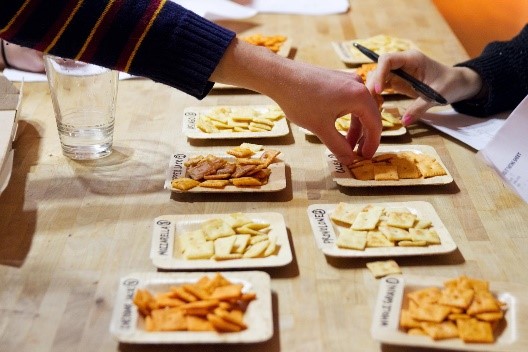By wearing some hefty goggles, you can experience any imaginable type of inhospitable or impractical environment, from flying through space to swimming with sharks and running around an ant hill. Right now, gaming and entertainment dominate virtual reality (VR) and augmented reality (AR) but practical applications are many. VR is a fabulous tool that helps people designing buildings, and train doctors more efficiently, and it has grand applications for marketing researchers as well.
Imagine being tasked with laying out a brand new store. Would you arrange the aisles in multiple long rows or alternate with short intersecting rows? Would you place tables randomly throughout or only at the front? Would you place the check-out counter at the front, the back, or the sides? Virtual reality lets you research infinite options without actually building, furnishing, and refurnishing a test outlet. Simply program into the virtual reality system the types of aisles and tables and checkouts you want to test and then move those items around virtually. Instead of testing two designs, test 300 designs. Put a pair of VR goggles on people and let them ‘walk’ through the various configurations without ever stepping into a store.
If you’re keen for a good shelf test, you’ll also love to work with VR. Using a hand-held device, the best virtual reality systems will let you pick up an object, perhaps a box of cookies, a bottle of shampoo, or a pair of pants. Though you can’t actually taste, smell, or feel the object, turning the device in your hand will also turn the imaginary object in your hand. You can then lift the object to your face and read the label on every side of the box, bottle, or package. It’s all an illusion projected to your eyes through the goggles.
 Right now, virtual reality does a fine job of displaying images so that people can see and read objects and packaging. But for products that are highly sensory, like food, personal care products, and clothing, not having access to taste, scent, or touch is a serious problem. Imagine picking out a bottle of shampoo by sight only. After choosing one in your price point that suits your hair type, you could then read about the scent – apple blossom, vanilla, or honey. But what guarantee do you have that you will actually love the scent that will permeate your shower and form a haze around your head for a month? Virtual reality is great for designing stores and running basic shelf tests, but it certainly doesn’t work (yet!) with products that have extensive sensory involvement. Or for that matter, with people who’d rather read a paperback over a tablet.
Right now, virtual reality does a fine job of displaying images so that people can see and read objects and packaging. But for products that are highly sensory, like food, personal care products, and clothing, not having access to taste, scent, or touch is a serious problem. Imagine picking out a bottle of shampoo by sight only. After choosing one in your price point that suits your hair type, you could then read about the scent – apple blossom, vanilla, or honey. But what guarantee do you have that you will actually love the scent that will permeate your shower and form a haze around your head for a month? Virtual reality is great for designing stores and running basic shelf tests, but it certainly doesn’t work (yet!) with products that have extensive sensory involvement. Or for that matter, with people who’d rather read a paperback over a tablet.
Until we figure out a way to incorporate smell-o-vision (and boy, have we tried!) into VR goggles, some marketing research projects will continue to rely on reality. Not virtual reality. Not augmented reality. But actual reality.



